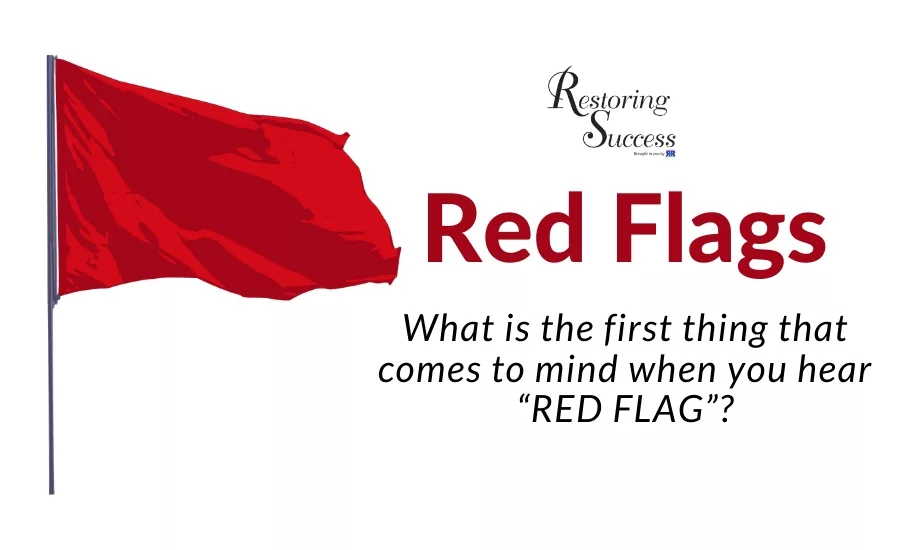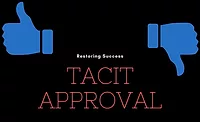Restoring Success: Red Flags
What is the first thing that comes to mind when you hear “RED FLAG”?

You may be thinking of something bad or good. Maybe you are thinking about a situation that you saw “Red Flags” and the result was something bad? A red flag is, “a warning signal or sign; something that indicates or draws attention to a potential problem, danger, or irregularity” Is it good or bad?
Red flags built into your systems and embraced by the team can be a very good thing. The restoration world is complex and fast moving. It is very easy for even the best of the best to make a mistake or miss something. When we embrace and pay the appropriate attention to red flags, it gives us the ability to proactively manage things to have a positive outcome. Let us remember that a red flag is only a signal; if we react to a signal of a coming problem or irregularity, we can get things back on track.
True story about the purchase of RED FLAGs
We may think of reports, software, and alerts that present data in the form of flags, but it is equally important that team members understand that they can and should throw up flags. Team members should not lose sight of the fact that everyone in the organization is on the same team and should all be working towards the same positive results. There is no room for defensiveness or a “cover yourself” mentality in an organization that fully embraces red flags into their culture.
A particularly vociferous and enthusiastic supervisor charged with the reconstruction of a home based on a specific scope of work, came running into the building, “Red Flag! Red Flag! I am red flagging this job!”, he screamed.
He approached me and exclaimed, “I am red flagging this job!”
I replied, “Why?”
He said, “There are many things that were missed from the scope.”
I said, “Good job! Now, go speak to the estimator, get it corrected and execute.”
Nobody was offended. The supervisor did his job and reviewed the scope before executing, he threw up the flag, the estimator was open and thankful, they collaborated, got it done and successfully completed the job both from a service and profitability standpoint.
And so, we bought actual red flags for the team to throw up in the shop with pride.
Perhaps, the person answering the phone notices frequent phone calls from one customer with lots of questions; a flag to the manager that the customer may need a complete review of the process may be in order. A possible communication issue headed off at the pass?
During high volumes, the team is working around the clock, mistakes can happen in the field; put the flags on high alert. Explain to the team that when dealing with high volumes and long hours, it is easier to miss something or make a mistake, everyone is on the same team, keep an eye out and communicate or fix things that someone else may have missed.
The following are a few considerations in using Red Flags to proactively manage positive outcomes:
- Culture: Our culture is an important ingredient as there most be unity amongst the team.
- Objectives should be clear so that everyone can rally common goals.
- Safe: Our environment should feel safe. If an occasional problem or mistake occurs, an individual should be able to see it as an opportunity to improve, learn and grow with the support of colleagues and leadership. We should be able to celebrate the success that the red flag helped the team achieve.
- Systems/Data/Reports/Software: The following is just a short list to get the wheels turning; the are many complex considerations to using the flags that lie within this area:
- Less is More: Be cautious of looking at too much information at once and losing site of the “flags”.
- Proactive and Timely: Workflows, information, and operations should be designed that flags can be used proactively. As an example, looking at job profitability after the job is complete has limited or no use as a “flag” or signal and gives no opportunity to change the outcome.
- Accessibility and Communication: The flags must be accessible or communicated to the right people within the organization so that they can use them to positively impact the outcomes.
- Training and Understanding: We must understand and be trained on the information that we are looking at to use it properly. There are infinite ways to present information and flags; the key is understanding it. Simple example:
6/1/2020: In Progress – Water Loss – Start Date: 5/22/2020
At a quick glance, by the dates, something is going on with the loss. At 10 days, if the file is reviewed there should be clear documentation that tells the story explaining 10 days of drying. The dates are a flag indicating irregularity. (And someone should be accountable and compelled to look at the job file)
- People: As with most things in the operation, our people can be the most important. With the right tools, training/education, and culture, the team can be the best flagging system out there.
- Consistency in using flags: Flags should create action consistently when they present themselves.
- Praise and encourage flagging with constructive communications and the collaboration of solutions.
Next time something goes off track, consider the systems and culture. Flags help us better proactively manage desired results.
Happy Restoring Success.
Looking for a reprint of this article?
From high-res PDFs to custom plaques, order your copy today!








